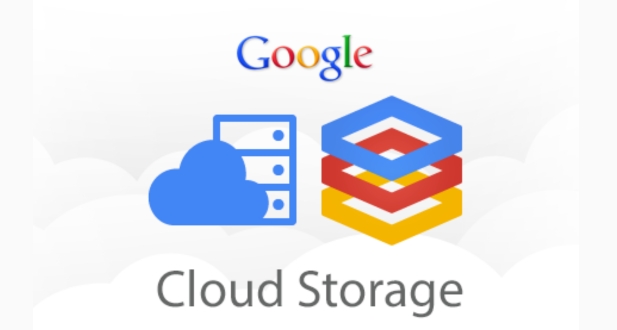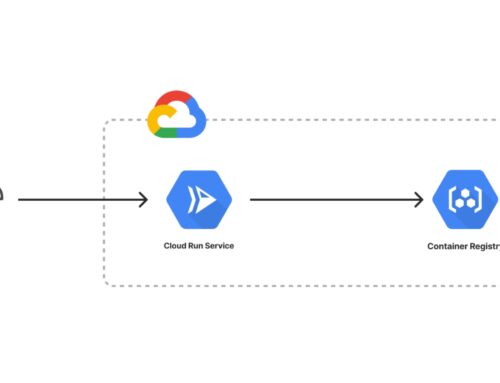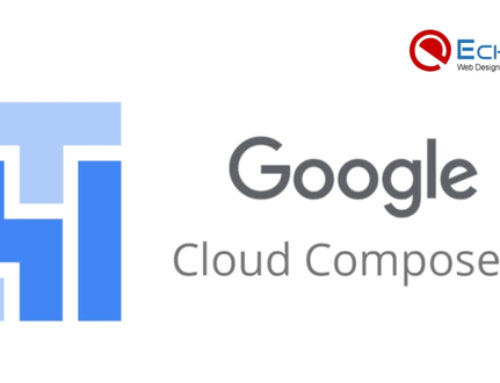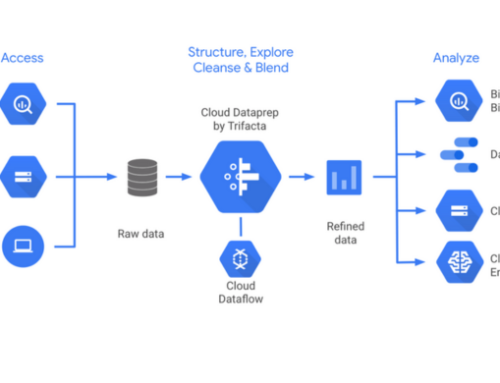Introduction
In the ever-growing data landscape, organizations are constantly seeking cost-effective solutions for storing vast amounts of information. Traditional storage options often prove expensive and inefficient, particularly for managing infrequently accessed data. To address this challenge, Google Cloud introduced Cloud Storage Nearline and Coldline, two storage classes designed for archival and long-term data retention at significantly lower costs compared to standard storage.
Cloud Storage Nearline and Coldline provide a robust and scalable solution for storing infrequently accessed data, enabling organizations to optimize their storage expenditures without compromising data accessibility or reliability. With their tiered storage architecture, flexible access options, and seamless integration with other Google Cloud services, Cloud Storage Nearline and Coldline have become popular choices for managing large data repositories and archival backups.
Navigating the World of Tiered Storage
The Need for Tiered Storage
In the rapidly evolving digital landscape, organizations face a growing challenge in managing the escalating volumes of data while simultaneously controlling storage costs. The traditional approach of storing all data on high-performance, costly storage solutions is no longer sustainable. This has led to the emergence of tiered storage solutions as a strategic approach to optimize storage expenditures.
Understanding the concept of tiered storage is pivotal in addressing this challenge. Tiered storage involves categorizing data into different storage classes based on its usage patterns, access frequency, and performance requirements. By classifying data into tiers, organizations can allocate resources more efficiently, ensuring that frequently accessed and critical data resides on high-performance storage, while less frequently accessed or archival data is stored on more cost-effective solutions.
Introducing GCP Cloud Storage Nearline and Coldline
In response to the need for tiered storage, Google Cloud Platform (GCP) offers two distinct storage classes, Nearline and Coldline, designed to address specific requirements and optimize storage costs.
GCP Cloud Storage Nearline is tailored for data that is accessed less frequently but requires low-latency access when needed. This storage class is ideal for backup, archival, and disaster recovery data. With Nearline, organizations benefit from a balance between cost-effectiveness and quick data retrieval.
On the other hand, GCP Cloud Storage Coldline is optimized for data that is accessed infrequently and is intended for long-term archival. Coldline provides an even more cost-effective solution for organizations looking to store large volumes of data with the expectation of minimal access.
Understanding the Storage Classes
To navigate the world of tiered storage effectively, it is crucial to understand the characteristics and use cases of each storage class, enabling organizations to make informed decisions about where to store their data.
Cloud Storage Nearline is suited for scenarios where data access is infrequent but requires lower latency compared to archival storage. It is an excellent choice for storing data that needs to be retrieved for analysis or compliance purposes. With a retrieval time measured in seconds, Nearline strikes a balance between cost-efficiency and accessibility.
Cloud Storage Coldline, on the other hand, is the go-to solution for organizations with data that is rarely accessed and is intended for long-term storage. Its significantly lower storage cost makes it an ideal choice for archival data that needs to be retained for compliance or historical purposes. While Coldline has a longer data retrieval time compared to Nearline, its cost-effectiveness makes it a compelling option for organizations prioritizing storage savings.
By strategically classifying data into Cloud Storage Nearline and Coldline based on its access patterns and importance, organizations can achieve substantial cost savings without compromising on data availability and retrieval times. This tiered storage approach aligns with modern data management strategies, offering flexibility, efficiency, and optimal utilization of cloud storage resources.
Managing Data with Nearline and Coldline
Creating and Managing Storage Buckets
Cloud Storage provides a user-friendly environment for creating and managing storage buckets, facilitating efficient data organization and access control. To create a storage bucket, users can navigate to the Google Cloud Console and follow a straightforward process. During bucket creation, users have the flexibility to configure various parameters, including access controls and lifecycle rules.
Access controls are crucial for securing data within storage buckets. By setting appropriate access policies, organizations can control who can access and modify the data stored in the bucket. Additionally, Cloud Storage allows users to implement lifecycle rules, automating the management of data over time. For example, organizations can define rules to transition data from Cloud Storage Standard to Nearline or Coldline based on access patterns and storage cost considerations.
To further enhance data organization, users can adopt various bucket design patterns based on their specific requirements. For instance, organizing data by project, department, or data type can simplify data management and access control.
Uploading, Storing, and Retrieving Data
Once storage buckets are set up, organizations can leverage Cloud Storage Nearline and Coldline to upload, store, and retrieve data according to their access and cost considerations.
Uploading data to Cloud Storage involves simple steps, such as using the Cloud Console, command-line tools, or APIs. Once uploaded, data is automatically stored in the specified storage class, whether it’s Cloud Storage Standard, Nearline, or Coldline. Users can choose the appropriate storage class based on the anticipated access frequency of the data.
Retrieving data from Cloud Storage is equally straightforward, but the choice between Nearline and Coldline influences the process. Data stored in Nearline can be retrieved with lower latency, making it suitable for scenarios where occasional, low-latency access is required. On the other hand, data stored in Coldline, being optimized for long-term archival, has a longer retrieval time but offers significant cost savings.
Monitoring and Managing Storage Costs
Effectively managing storage costs is a critical aspect of utilizing tiered storage environments like Cloud Storage Nearline and Coldline. Google Cloud provides robust monitoring capabilities to help organizations keep track of storage usage metrics and associated costs.
Cloud Storage’s monitoring tools offer insights into storage usage patterns, enabling organizations to identify opportunities for cost optimization. Users can access detailed reports on storage costs, allowing them to make informed decisions about resource allocation and storage class choices.
By actively monitoring storage costs, organizations can implement cost-effective data management strategies, such as optimizing data placement between Nearline and Coldline based on changing access patterns. This proactive approach ensures that storage resources are aligned with the organization’s budgetary constraints while maintaining the necessary data accessibility and responsiveness.
Real-World Use Cases and Customer Success Stories
Optimizing Data Storage Costs for Large-Scale Data Lakes
Large-scale data lakes and analytics platforms often face challenges in managing storage costs, especially when dealing with vast amounts of data. Cloud Storage Nearline and Coldline offer an effective solution to optimize storage costs for infrequently accessed data within data lakes. Organizations can leverage these storage classes to seamlessly transition data based on access patterns, ensuring cost-effectiveness without compromising data availability.
For example, consider a scenario where historical data in a data lake is rarely accessed but still needs to be retained for analytical purposes. By utilizing Cloud Storage Nearline and Coldline, organizations can significantly reduce storage costs for this infrequently accessed data while maintaining the ability to retrieve it when needed. This approach allows organizations to strike a balance between cost savings and data accessibility, making Cloud Storage Nearline and Coldline valuable tools for large-scale data lake management.
Managing Archival Backups with Cloud Storage Nearline and Coldline
Archival backups play a crucial role in long-term data retention and disaster recovery strategies. Cloud Storage Nearline and Coldline provide an ideal solution for storing archival backups in a cost-effective and secure manner. Organizations can take advantage of these storage classes to optimize costs while ensuring the durability and accessibility of their archival data.
Consider a scenario where an organization needs to store backup copies of critical data for compliance and business continuity purposes. By utilizing Cloud Storage Nearline and Coldline, organizations can implement a tiered storage strategy. Frequently accessed backups can be stored in Cloud Storage Standard, while archival backups, which are accessed less frequently, can be stored in Nearline or Coldline. This approach allows organizations to optimize costs without compromising data availability, making Cloud Storage Nearline and Coldline valuable components of a robust archival backup strategy.
Enabling Compliance Archiving with Cloud Storage Coldline
Compliance archiving involves the secure and compliant storage of data to meet regulatory requirements. Cloud Storage Coldline is particularly well-suited for compliance archiving due to its focus on long-term data retention, durability, and security features.
In a compliance-driven environment, organizations often need to retain data for extended periods and ensure its immutability. Cloud Storage Coldline provides a cost-effective solution for storing compliance data securely over the long term. For instance, financial institutions may leverage Coldline to archive financial records, meeting regulatory mandates for data retention.
A real-world example could involve a healthcare organization managing patient records for compliance with healthcare regulations. By using Cloud Storage Coldline, the organization can securely archive patient data for the required retention period, demonstrating a successful implementation of compliance archiving with Google Cloud Storage.
Optimizing Data Lifecycle Management with Nearline and Coldline
Leveraging Lifecycle Rules for Automated Data Management
Lifecycle rules in Cloud Storage offer a powerful mechanism for automating data management and optimizing storage costs. Organizations can create and configure these rules to seamlessly transition data between Cloud Storage Nearline and Coldline storage classes based on predefined policies and access patterns. For example, organizations may set up a lifecycle rule to automatically move data from Standard to Nearline after a specified period of inactivity, further transitioning it to Coldline for long-term archival. This automated approach ensures that data is stored in the most cost-effective storage class throughout its lifecycle, reducing manual intervention and enhancing overall efficiency.
Integrating with Cloud Functions for Data Processing and Transform
Integrating Cloud Storage Nearline and Coldline with Cloud Functions introduces a powerful combination for serverless data processing and transformation. Cloud Functions can be triggered based on data access events in Nearline and Coldline, enabling dynamic and automated data workflows. For instance, organizations can use Cloud Functions to process and transform data when it is retrieved from Nearline or Coldline storage. This integration enhances flexibility, allowing organizations to perform on-the-fly data processing without the need for a dedicated server infrastructure. Real-world examples could include image transformations, data format conversions, or customized data enrichment processes triggered by access events in Nearline or Coldline storage.
Enhancing Security and Compliance with Nearline and Coldline
Cloud Storage Nearline and Coldline come equipped with robust security features that organizations can leverage to protect sensitive data. These storage classes support encryption at rest, ensuring that data stored in Nearline and Coldline is securely encrypted. Additionally, access controls, including Identity and Access Management (IAM) policies, enable organizations to manage and restrict access to stored data based on specific user roles and permissions.
For compliance purposes, Nearline and Coldline storage classes offer capabilities that align with data privacy and regulatory requirements. Organizations can utilize these storage classes to store and manage data in a manner compliant with industry standards. Regular audits, access logs, and monitoring features contribute to a comprehensive security and compliance posture when using Cloud Storage Nearline and Coldline for data storage. Adopting these guidelines ensures that organizations can meet their security and compliance objectives while benefiting from the cost-effective storage options provided by Nearline and Coldline.
Leveraging Cloud Storage Nearline and Coldline for Cost-Effective Data Management
Analyzing Data Access Frequency and Latency Requirements
Understanding the data access patterns is crucial for optimizing storage costs and performance in Cloud Storage Nearline and Coldline. Different types of data access, such as frequent, infrequent, or archival access, have varying impacts on storage costs and performance. Utilizing Cloud Storage monitoring tools, organizations can analyze data access frequency to gain insights into how often data is accessed. This analysis enables the identification of suitable candidates for transition to Nearline or Coldline storage based on their access patterns.
Estimating Storage Costs for Nearline and Coldline
A comprehensive understanding of the pricing structure for Cloud Storage Nearline and Coldline is essential for effective cost management. This includes considerations for both storage and access costs associated with these storage classes. Organizations can leverage the detailed documentation provided by Google Cloud to estimate storage costs for different data volumes and access patterns accurately. Utilizing available tools and resources, such as the Google Cloud Pricing Calculator, enables organizations to make informed decisions and plan their budget effectively.
Optimizing Data Placement for Cost and Performance
Optimizing data placement involves strategically selecting the appropriate storage class for each type of data based on its access frequency and performance requirements. Frequently accessed data that demands low latency can be stored in the Standard Storage class, while infrequently accessed or archival data can be placed in Nearline or Coldline storage for cost-effectiveness. Organizations can create effective strategies for data placement optimization by considering the unique characteristics of their application workloads. This approach ensures that data is stored in the most suitable storage class, achieving a balance between storage costs and performance tailored to the specific needs of the organization.
Implementing Data Lifecycle Management with Nearline and Coldline
Designing Data Lifecycle Policies with Nearline and Coldline
Effective data lifecycle management involves designing comprehensive policies that address data retention, archiving, and deletion. These policies should be aligned with various considerations, including business requirements, regulatory compliance, and cost optimization goals. For example, organizations can establish policies that dictate how long data should be retained in the Nearline storage class before being transitioned to Coldline for cost savings. By tailoring data lifecycle policies to specific use cases and data types, organizations can efficiently manage their data throughout its lifecycle.
Automating Data Transition with Lifecycle Rules
Cloud Storage offers a powerful feature known as lifecycle rules that enables organizations to automate the transition of data between storage classes. By configuring lifecycle rules based on criteria such as data access patterns, retention periods, and storage costs, organizations can ensure seamless and automated data management. For instance, data that has not been accessed for a defined period can be automatically transitioned from Nearline to Coldline to optimize storage costs. Regular monitoring and validation of the execution of lifecycle rules are essential to guarantee data integrity and compliance with the established policies.
Integrating Data Processing and Transformation with Nearline and Coldline
To further enhance the capabilities of Nearline and Coldline storage, organizations can integrate Cloud Functions for data processing and transformation. Cloud Functions can be triggered based on events such as data access events or lifecycle transitions. For example, before transitioning data to Coldline for long-term archival storage, organizations can trigger Cloud Functions to perform necessary data processing and transformation tasks. This integration allows for a seamless workflow where data is processed and transformed as part of the lifecycle management process, ensuring that it meets specific requirements before being archived in Coldline storage. This approach not only enhances the versatility of Nearline and Coldline but also enables organizations to implement customized data workflows aligned with their business needs.
Enhancing Security and Compliance in Nearline and Coldline Environments
Securing Data in Nearline and Coldline with Encryption and Access Controls
Ensuring the security of data stored in Nearline and Coldline environments is paramount. To achieve this, organizations can implement robust encryption practices both at rest and in transit. Cloud Storage provides features for encryption at rest, safeguarding data confidentiality within Nearline and Coldline storage classes. Additionally, encrypting data in transit adds an extra layer of protection during data transmission. Granular access controls play a crucial role in securing data access. Organizations can define and enforce access policies to restrict data access to authorized users and services, reducing the risk of unauthorized access. Regular monitoring and auditing of data access logs further enhance security by enabling the detection of any unauthorized activity or potential threats.
Enforcing Compliance with Regulatory Requirements
Meeting regulatory requirements is a key aspect of data management, especially when it comes to data retention, archiving, and access controls. Cloud Storage offers compliance features that enable organizations to align with industry-specific and regulatory standards. With Nearline and Coldline storage classes, organizations can implement compliance archiving and data retention policies effectively. By leveraging these features, organizations ensure that their data management practices adhere to the necessary legal and regulatory standards, providing a secure and compliant environment for their stored data.
Implementing Data Governance and Auditability (300 words)
Establishing a robust data governance framework is essential for effective data management. This involves defining and managing data access, usage, and retention policies within Nearline and Coldline storage. Implementing data audit trails allows organizations to track changes, access logs, and data movement. This ensures transparency in data handling, making it easier to identify and investigate any anomalies or security incidents. Regular audits and reviews of data management practices contribute to maintaining data integrity and compliance. By enforcing strong data governance and auditability practices, organizations can instill confidence in their data management processes and demonstrate a commitment to maintaining a secure and compliant environment for their stored data.
Case Studies and Real-World Applications of Cloud Storage Nearline and Coldline
Case Study: Optimizing Storage Costs for a Media and Entertainment Company
Challenge: A media and entertainment company was facing escalating storage costs due to its vast archive of video and audio content. They needed a cost-effective solution to store infrequently accessed media files without compromising accessibility.
Solution: The company implemented Cloud Storage Nearline and Coldline to tier their media content based on access frequency. They transitioned infrequently accessed media files to Nearline and Coldline, significantly reducing their storage costs without impacting the availability of content for their internal creative teams and external streaming services.
Key Takeaways:
Cloud Storage Nearline and Coldline can effectively reduce storage costs for large media archives.
Tiered storage strategies can optimize storage costs without compromising data accessibility.
Cloud Storage provides seamless integration with media processing and streaming services.
Case Study: Managing Archival Backups for a Large Enterprise
Challenge: A large enterprise was struggling to manage the growing volume of archival backups stored on-premises. They needed a secure and cost-effective solution for long-term data retention and disaster recovery.
Solution: The enterprise adopted Cloud Storage Nearline and Coldline to store their archival backups. They leveraged lifecycle rules to automate the transition of inactive backups to Nearline and Coldline, reducing storage costs and simplifying their backup management processes. Additionally, they utilized Coldline’s durability and reliability to ensure the long-term preservation of their critical data.
Key Takeaways:
Cloud Storage Nearline and Coldline are ideal for long-term archival backup storage.
Lifecycle rules can automate the transition of inactive backups to Coldline.
Cloud Storage’s durability and reliability ensure the integrity of archival data.
Case Study: Implementing Compliance Archiving for a Financial Services Firm
Challenge: A financial services firm needed a compliant and cost-effective solution for archiving financial records and regulatory documents. They had to adhere to strict data retention requirements and ensure secure access for audit purposes.
Solution: The firm implemented Cloud Storage Coldline to store their financial records and regulatory documents. They configured Coldline’s access controls to restrict access to authorized users and services, ensuring compliance with industry regulations. Additionally, they utilized Cloud Storage’s immutable storage option to prevent accidental data deletion or alteration.
Key Takeaways:
Cloud Storage Coldline is well-suited for compliance archiving of financial records and regulatory documents.
Granular access controls ensure compliance with data privacy and regulatory requirements.
Immutable storage options prevent accidental data deletion or tampering.
Conclusion
In conclusion, the utilization of GCP Cloud Storage Nearline and Coldline storage classes provides organizations with a versatile and cost-effective solution for managing their data across various access patterns and lifecycle stages. As data volumes continue to grow, the need for tiered storage becomes increasingly evident, and Nearline and Coldline storage offer strategic options for optimizing costs without compromising performance.
These storage classes enable organizations to tailor their data management strategies to the unique requirements of their workloads. Whether it’s frequently accessed data that benefits from the low-latency retrieval of Nearline or rarely accessed data that finds a cost-effective home in Coldline, the tiered approach addresses diverse data access patterns.
Real-world applications and success stories demonstrate the tangible benefits of using Nearline and Coldline for optimizing storage costs, managing data lifecycle, and ensuring compliance with industry standards. The ability to seamlessly integrate with other Google Cloud services, automated lifecycle management through lifecycle rules, and efficient data processing with Cloud Functions further enhance the versatility of these storage classes.
Looking forward, the roadmap for Cloud Storage Nearline and Coldline indicates a commitment to continuous improvement, with potential features and updates aligning with evolving industry needs. Community engagement remains a driving force, allowing users to contribute to the development process and shape the future of tiered storage solutions.
In embracing GCP Cloud Storage Nearline and Coldline, organizations can navigate the complexities of tiered storage with confidence, optimizing their data management practices for efficiency, security, and compliance in a dynamic digital landscape.









